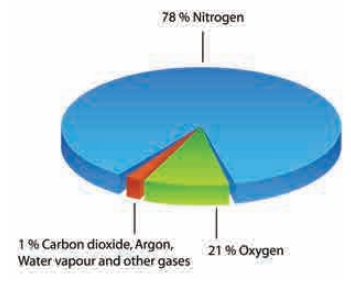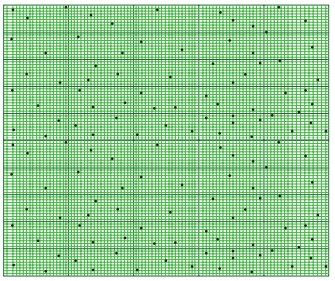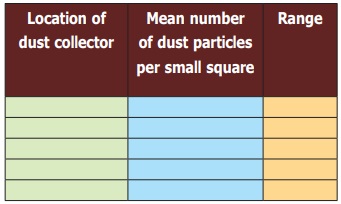Air | Term 2 Unit 4 | 6th Science - Composition of Air | 6th Science : Term 2 Unit 4 : Air
Chapter: 6th Science : Term 2 Unit 4 : Air
Composition of Air
Composition
of Air
From Priestley's experiment which was followed
by Ingenhousz and Rutherford, we came to know that air was not just one
substance. We will now describe what air is made up of. This is called
composition of air.
The major component
of air is nitrogen. Almost four – fifth of air is nitrogen. The second major
component of air is oxygen. About one – fifth of air is oxygen. In addition to
nitrogen and oxygen gases, air also contains small amount of carbon–di– oxide,
water vapour and some other gases like argon, helium etc. The air may also
contain some dust particles.
The composition of
air in terms of percentage of its various components can be written as follows:

The composition of air changes slightly from
place to place and also from season to season. For example,
* Air over
industrial cities usually has a higher amount of carbon-di-oxide in it than the
air over open spaces.
* Air in coastal
areas may have more water vapour than inland areas.
* Air also contains
more water vapour in rainy season.
* The amount of
dust in the air is more in windy places than other areas.
Test for the presence of dust particles in air
You might have seen
the sunlight entering into a dark room through a narrow slit and making shiny
dust particles dancing merrily on the path of sunlight. Actually, the air in a
room always contains some dust particles, but they are so small that normally
they are not visible to us. When a beam of sunlight falls on them, the tiny
dust particles become visible.
Shall we do an activity to calculate the amount
of dust particles in air from our area?
Take a graph sheet. Using marker pens draw a
5x5 cm square on the graph. Apply a thin film of grease on the graph sheet.
This sheet will serve as dust collector. Make four or five graph sheets.
Discuss in the
whole class, as where to place the dust collectors, how long to collect dust
particles and place the dust collectors in agreed positions.
Ensure that the
dust collectors do not get blown away. After the time scheduled for performing
this activity is reached, remove the paper and count the number of collected
dust particles in the marked area in all the sheets, using a magnifying glass
at the dust collector. We can see something similar to the diagram below:-

Then, calculate the mean number of dust
particles in the marked area.

The range of the dust can also be calculated as
given below:-
Range = Maximum value – minimum value
Collect details
from all the areas where we have kept the dust collector sheets. Tabulate the
recordings in the table given below:-

* Which area do you
think will have the most dust?
__________________________________
* Which area do you
think will have the least dust?
__________________________________
Test
for water vapour in air

Take a few ice
cubes in a glass. Keep it on the table for a few minutes. Observe what happens.
You could see tiny droplets of water all over the outer surface of the glass.
From where do these droplets come?
The water vapour present in the air condenses
on the cold surface of the glass. This shows that air contains water vapour.
Related Topics